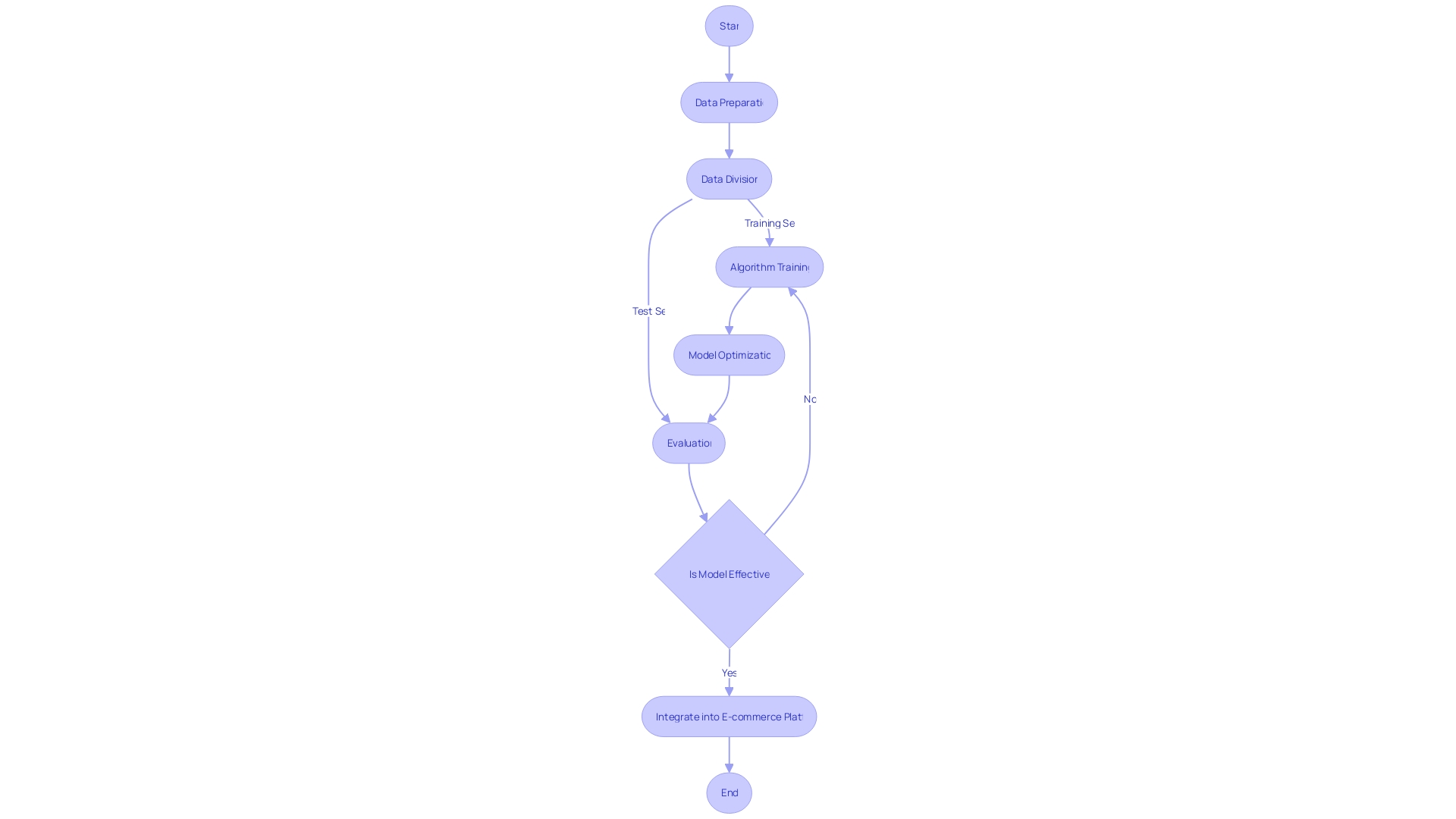Introduction
E-commerce platforms are constantly seeking ways to enhance the user experience and drive engagement. One powerful tool they rely on is recommendation systems, which utilize sophisticated algorithms to deliver personalized product suggestions. These systems have evolved to understand and predict consumer preferences, saving users time and effort by curating tailored recommendations.
In this article, we will explore the fundamentals of recommendation systems, the different types available, and how businesses of all sizes can build effective systems. We will also delve into the importance of data collection and preparation, selecting the right algorithm, implementing the system, and evaluating its performance. Join us as we uncover the intricate world of recommendation systems and their impact on the e-commerce landscape.
Understanding Recommendation Systems
E-commerce platforms are increasingly harnessing the power of recommendation systems, sophisticated algorithms that sift through user data to deliver personalized product suggestions. These systems are not mere conveniences; they are a sophisticated blend of technology and psychology, designed to understand and predict consumer preferences based on historical behavior and discernible patterns. For instance, eBay has demonstrated how the implementation of its recall module in the recommendation system has led to a notable 15% increase in buyer engagement.
This module's primary role is to present the most relevant and high-quality items to users, previously relying on single modalities like item titles or images. The evolution of recommendation engines is evident in the way they save users time and effort by curating tailored suggestions, which in turn, bolsters user satisfaction and sparks the discovery of new, intriguing products. Case in point, a basic recommendation engine developed for a voice-first social network resulted in a staggering 40% surge in key metrics, further underscoring the tangible impact of these systems.
Remarkably, these engines are not solely the domain of large corporations with vast amounts of structured data; even early and mid-stage startups can build effective recommendation engines without deploying complex neural networks or machine learning models. By exploring the fundamentals of content-based recommendations and leveraging algorithms like tf-IDF, businesses of all sizes can craft systems that resonate with user interests and drive engagement, as evidenced by the more than 30 million recommendations generated monthly by the aforementioned social network's engine. The key to success lies in the architectural flexibility that allows for customization and adaptation across a myriad of applications, from product discovery to content recommendations on various platforms.

Types of Recommendation Systems
In the dynamic world of e-commerce, recommendation systems are the engines driving personalized experiences. They come in various forms, each with its unique capabilities and applications.
Collaborative filtering, for instance, thrives on the power of collective user preferences. It constructs a user-item matrix resembling a vast spreadsheet, capturing user interactions with items like movies.
By analyzing this data, the system uncovers patterns, leading to serendipitous recommendations that may surprise and delight users with new discoveries. Content-based filtering, on the other hand, zeroes in on item characteristics.
It's like having a knowledgeable friend who, after noticing you've enjoyed a series of mystery novels, suggests other books from the same genre. This method relies on data such as search history, purchase records, and wishlists to tailor suggestions closely aligned with the user's established preferences.
The hybrid approach merges these two methodologies, enhancing the recommendation quality by leveraging both user behavior and item attributes. This multifaceted strategy is particularly effective for e-commerce platforms aiming to optimize their user experience. It's a testament to the adaptability and sophistication of AI in product discovery, as evidenced by a significant uptick in AI investment among e-commerce decision-makers. Despite economic challenges, a staggering 86% of these leaders are keen to amplify their AI endeavors, with 76% reporting a revenue boost of 11% or more through Ai's prowess in merchandising, search, and personalization. As we navigate the intricacies of these systems, we recognize their profound impact on e-commerce, offering a glimpse into the mechanisms that shape our online shopping journeys. From the user-item matrix of collaborative filtering to the discerning eye of content-based systems, AI continues to redefine the landscape of product discovery, delivering a more intuitive and satisfying shopping experience.
Collecting and Preparing Data
Creating a robust product recommendation system is a nuanced process, as exemplified by the Letter ON team's efforts, which led them to adopt Amazon SageMaker and MLOps. This transition was necessitated by the need to move beyond simple product association and delve into the complex web of individual customer preferences.
By leveraging deep learning algorithms, they were able to discern not just linear but also intricate relationships within user data. The foundation of any recommendation engine, as demonstrated by the voice-first social network's success, which saw a 40% increase in key metrics, is the meticulous preparation of data.
This involves not only sourcing user interaction data, such as browsing and purchase history, but also ensuring its clarity and coherence by eliminating duplicates and irregularities. In the modern e-commerce landscape, the availability of public web data has become a goldmine for refining product recommendations.
This data encompasses customer reviews, ratings, and even seemingly unrelated information, which can collectively paint a detailed picture of consumer behavior and market trends. The art of recommendation extends beyond the algorithmic prowess to the realm of user experience. Transparency and scrutability are vital, allowing users to understand the rationale behind the suggestions they receive, and possibly even influence future recommendations. This is where the balance between a personalized experience and user empowerment is struck, creating a recommendation system that is not just intelligent, but also intuitive and user-centric.
Choosing a Recommendation Algorithm
Choosing the right recommendation algorithm is a crucial step for enhancing product discovery in e-commerce. The selection is influenced by data type, problem complexity, and performance goals.
For instance, collaborative filtering harnesses the power of collective user behavior to generate suggestions, while content-based filtering relies on the individual's past interactions, such as search history and purchases. On the other hand, matrix factorization is adept at discerning patterns within large datasets to predict user preferences.
These methods are not just theoretical; industry leaders like Amazon have successfully leveraged them to create dynamic, personalized shopping experiences. The results speak for themselves: a European e-commerce report highlighted an 11% revenue boost for businesses that integrated AI into their operations. Moreover, a case study from a voice-first social network demonstrates a recommendation engine's efficacy, with a 40% increase in key metrics and over 30 million recommendations monthly. Clearly, AI-driven recommendation systems are pivotal for e-commerce success, offering a curated, seamless shopping journey that resonates with shoppers' unique tastes.
Implementing the Recommendation System
The implementation of a recommendation system is a nuanced process, requiring meticulous attention to data handling and algorithm training. Embarking on this venture, one must first engage in data preparation, ensuring the information is primed for the algorithm's consumption.
The next pivotal step is to divide this data into two distinct sets: one for training and the other for testing. This bifurcation is crucial for training the algorithm effectively and subsequently evaluating its performance with utmost accuracy.
It's noteworthy that the programming language and libraries selected can influence the implementation nuances, but the foundational steps remain consistent across platforms. A case in point is the voice-first social network's recommendation engine that resulted in a remarkable 40% surge in key metrics, handling over 30 million recommendations monthly.
Similarly, eBay's recall module underscores the importance of retrieving high-quality, pertinent items as the first step in the recommendation process. Such systems not only boost user engagement but also significantly enhance revenue, as evidenced by an impressive 11% increase reported by 76% of decision-makers leveraging AI.
Furthermore, the advent of frameworks like SSLRec has simplified the development and evaluation of recommendation models, providing a unified approach to training and validation. This standardization is critical for ensuring fair comparisons between models and fostering innovation in the field. The integration of these systems into e-commerce platforms can address consumer biases, as seen with digital agents that restore consumer confidence by providing logical explanations for product recommendations. As we look at the broader e-commerce landscape, Ai's role is increasingly pivotal, with 86% of decision-makers planning to augment their AI investments. This trend reflects a recognition of Ai's transformative impact on product discovery and the overall shopping experience. The implementation of AI in product discovery is not just a technical undertaking; it's a strategic move that can redefine the e-commerce experience.

Evaluating and Improving the Recommendation System
Assessing the performance of an AI-driven product recommendation system is not just a technical exercise, but a multidisciplinary endeavor. Precision and recall are traditional metrics, yet they may not fully capture the socio-technical nuances of a platform like the BBC, which seeks to balance commercial success with public service values. The BBC's approach, which integrates perspectives from data scientists, editors, and product managers, suggests that the evaluation of recommender systems should also consider user engagement and retention over time, rather than single-session metrics.
This broader view is echoed in industry trends, with 76% of e-commerce decision-makers reporting a revenue increase of 11% or more through AI use, indicating the significance of nuanced evaluation methods. When refining recommendation algorithms, one must consider not only the data and the algorithm but also the organizational mission and user experience. As eBay's recall module demonstrates, focusing on relevant, high-quality item recommendations has driven a substantial 15% increase in buyer engagement.
This reaffirms the importance of evaluating the recommendation system in the context of the platform's objectives and the user's long-term interaction with the platform. To effectively measure the system's impact, we must go beyond precision@K and F1 scores and consider the cultural and operational intricacies that define the value of recommendations within a specific domain. This comprehensive approach ensures that our recommender systems not only drive engagement and sales but also resonate with our organizational values and user expectations.
Conclusion
In conclusion, recommendation systems are a powerful tool for e-commerce platforms to enhance the user experience and drive engagement. By utilizing sophisticated algorithms, these systems deliver personalized product suggestions based on consumer preferences and behavior patterns.
Different types of recommendation systems, such as collaborative filtering and content-based filtering, offer unique capabilities that optimize the user experience. Building an effective recommendation system requires careful data collection and preparation, leveraging deep learning algorithms and public web data to refine recommendations.
Choosing the right recommendation algorithm is crucial for enhancing product discovery. Collaborative filtering, content-based filtering, and matrix factorization have proven successful in delivering personalized shopping experiences.
Implementing a recommendation system involves meticulous attention to data handling, algorithm training, and performance evaluation. By evaluating the system's performance comprehensively and considering user engagement over time, businesses can align their recommender systems with organizational values. In summary, recommendation systems revolutionize e-commerce by delivering tailored product suggestions that resonate with users' unique tastes. Understanding the fundamentals of recommendation systems, selecting the right algorithm, implementing effectively, and evaluating performance comprehensively allow businesses to create impactful recommendation systems that drive engagement and increase revenue growth in the competitive e-commerce landscape.





